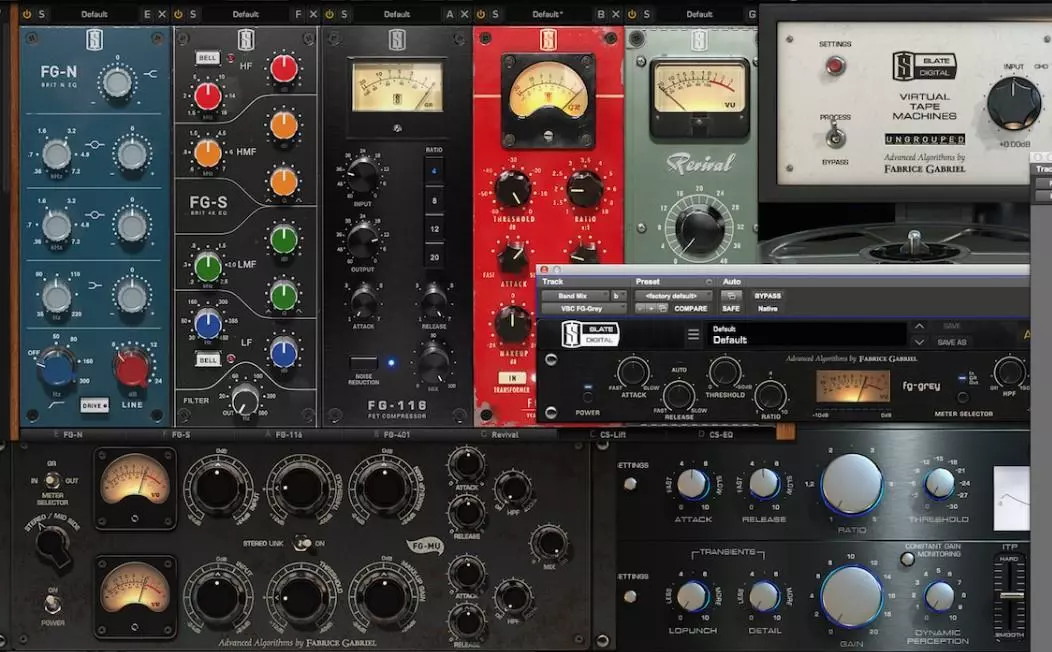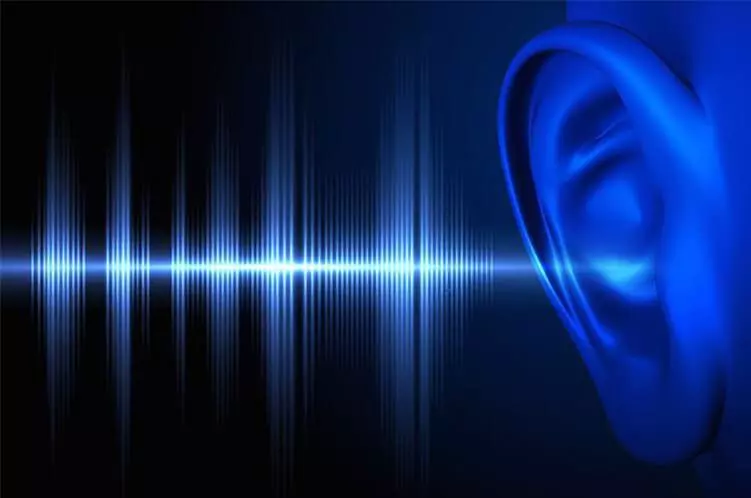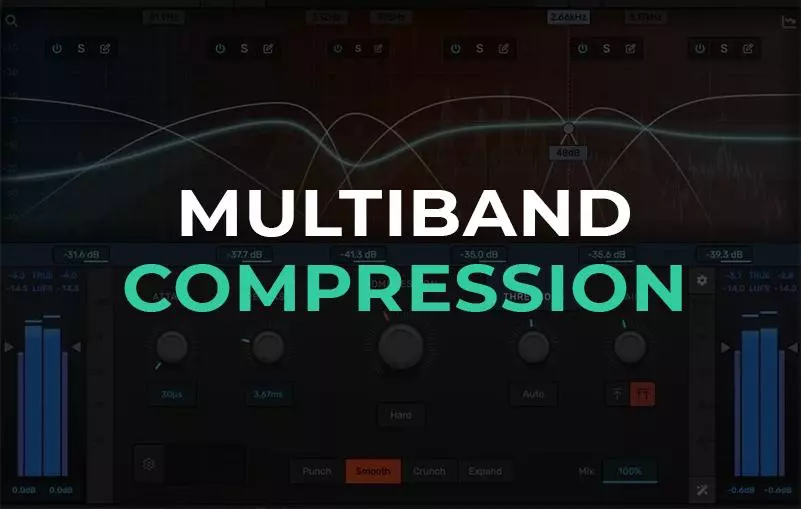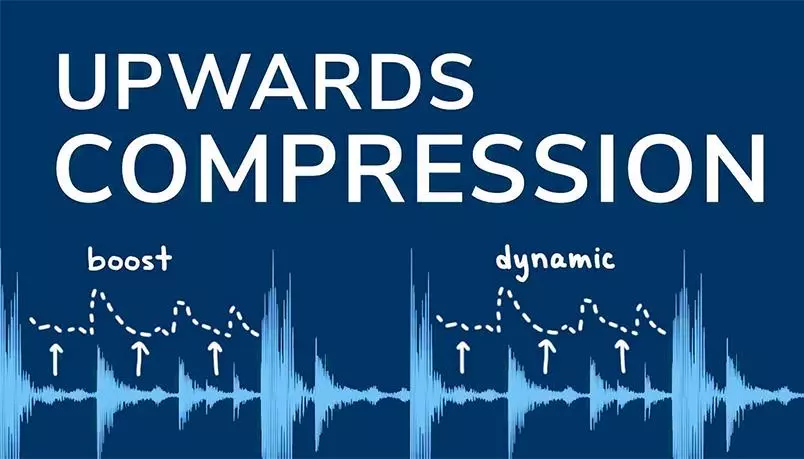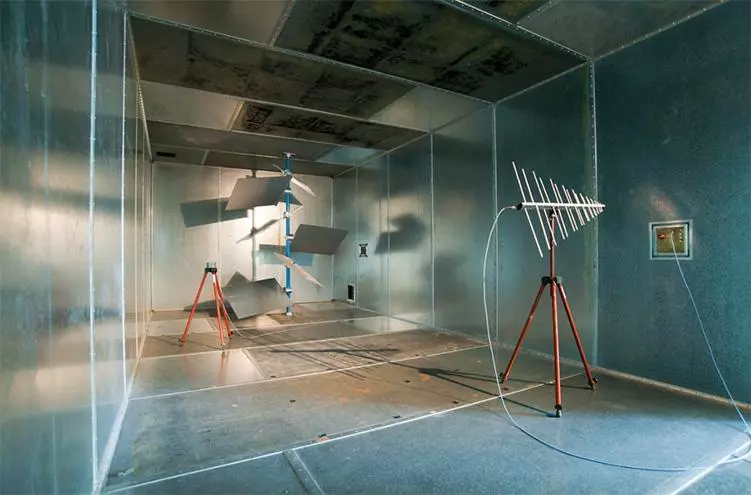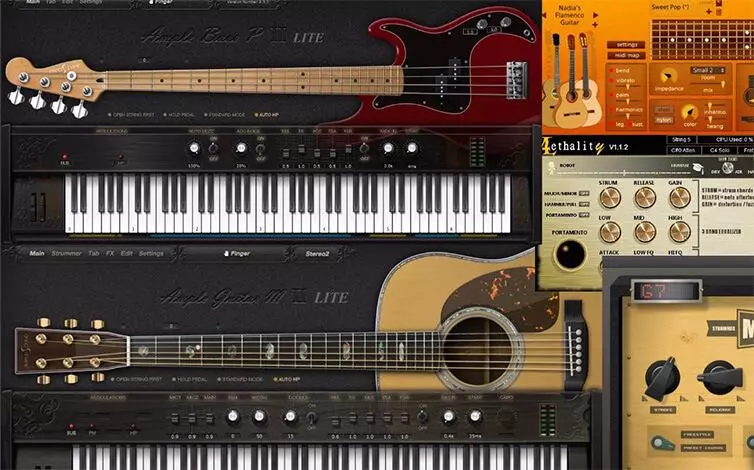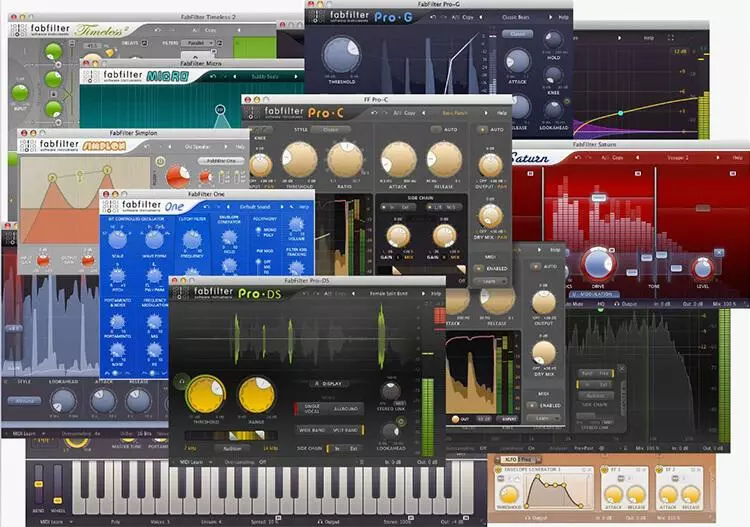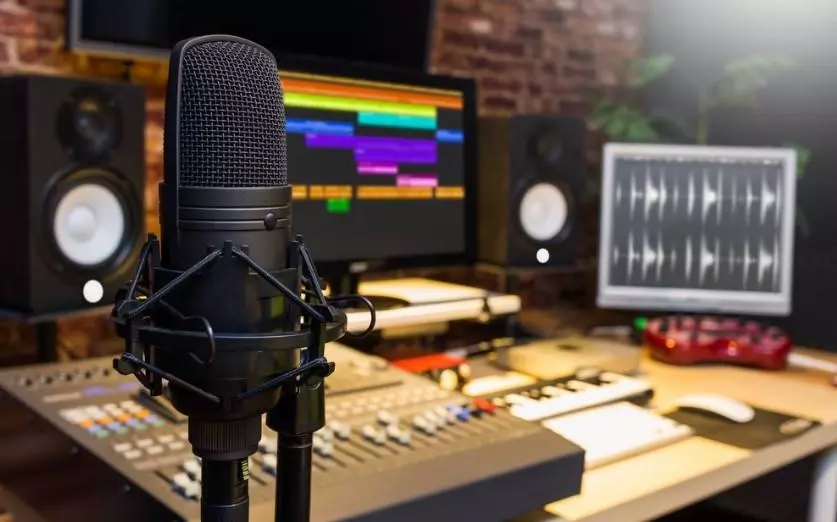How to make your own song

If you’re into music, singing, or playing an instrument, maybe you’ve thought, “How to Write the Song?” Songwriting is a great way to open up emotionally, dive into inspiration, and find a personal path to self-expression. That’s why so many psychologists recommend creative activities for everyone — they give you the freedom to express yourself, release your feelings, and experience a sense of relief.
A good song idea can pop up at any moment, so it’s worth being prepared. Keep a small notebook and pen in your bag or in easy reach at home and work. If an idea strikes while you’re out, you’ll have a way to save it, even if it’s just a title on paper. Sometimes, even a single word can lay the foundation for a future hit, so don’t miss the chance to capture any creative spark.
Another helpful habit if you want to make your own song is learning to quickly open the voice recorder on your phone. Sometimes it’s easier to hum a melody or talk through some lyrics than to write things down. This way, you can come back to the idea later and build on it when you have more time.
Once you’re set with the tools, it’s all about finding inspiration. We all have favorite artists and composers who leave a mark on our hearts. Make a playlist of their songs — it’ll help you keep that emotional spark alive and stay in the creative zone.
How to Start to Write a Song
Creating a song can feel like a journey with a clear beginning, process, and end. Deciding where to start is your first major choice, and it will shape how the rest of the process unfolds.
Some musicians prefer to start with a title, a lyric, or a theme, while others begin with chords, a melody, or a rhythm. There’s no universal “right” way — what matters is finding the approach that works best for you. One method might work for one song, while a completely different approach might be better for another. The more you experiment, the more ideas you’ll uncover.
Like any skill, songwriting benefits from regular practice. The more often you write, the faster your skills develop, and over time, your collection will grow with songs you’re proud of. Often, it takes creating dozens of songs to find a few real “gems.” Many experienced songwriters have archives filled with hundreds of compositions, built up over years. If you’re serious about songwriting, the best time to start is right now.
Of course, the advice to “just start” sounds easier than it is, and the question of where to begin can still feel daunting. Find a space where it’s easy to tune into inspiration — whether that’s nature, the beach, or a busy city street. Sometimes, ideas come out of nowhere, and it’s important to be prepared. Keep a small notebook handy to jot down any thoughts or lines that pop up.
Many songwriters share that they try to capture everything that comes to mind — whether it’s a lyric, a phrase, a melody, or a chord progression. Write down anything that sparks interest so you can revisit these ideas when you’re ready to develop them further.
Understanding Song Structure
Understanding structure is key to crafting a well-made song. Structure serves as the foundation that ties all elements together and shapes how listeners experience your music. While there’s no single formula for structuring a song, there are a few popular formats that can help make a track feel complete and cohesive. Knowing these formats is valuable whether you’re writing pop, rock, country, or any other genre.
Verse–Chorus–Verse–Chorus–Bridge–Chorus
This structure, often written as ABABCB, is one of the most common in popular music. Here, A stands for the verse, B for the chorus, and C for the bridge. Verses generally set up the song’s story, emotions, or message, while the chorus delivers the central hook or main idea in a memorable, repeatable way. The bridge then brings in something fresh, breaking up the repetition and leading smoothly back into a final chorus for a powerful finish.
Many hit songs use this structure because it’s familiar and satisfying to listen to, while also leaving room for creative twists. The alternating pattern of verses and choruses builds anticipation, allowing listeners to enjoy the rhythm of repetition and feel immersed in the melody.
Verse–Chorus–Verse–Chorus
This format (ABAB) is a simpler version of the previous structure, without a bridge. Here, verses and choruses alternate, creating a straightforward, easy-to-follow rhythm. This structure is ideal for shorter songs, especially when the chorus is strong enough to carry the melody without needing additional variations. Many pop and indie songs follow this structure, as it allows the song to get straight to the point without any unnecessary extras. With a catchy hook, this format can really let the chorus shine.
Verse–Verse–Bridge–Verse (AABA)
This structure, especially popular in jazz and early rock, involves two repeating verses, followed by a bridge, and then a final verse. It works well for ballads or softer songs, bringing a relaxed, classic feel to the music. Repeating verses reinforce the song’s main theme, making it memorable, while the bridge offers a brief change in melody or lyrics, creating a refreshing shift before returning to the final verse.
Alternative Song Structures
While the song structures mentioned above are some of the most popular, you don’t have to stick to them rigidly. Some songs add a pre-chorus to build tension before the main chorus, while others close with an outro that leaves a memorable finish. You can also start with an intro that sets the mood from the very first notes, immersing listeners in the track’s atmosphere.
You can mix and match different structural elements to create a setup that best suits your vision. Just remember that structure guides the listener, so it’s important to find a balance between familiarity and originality.
In the end, structure is just a roadmap, and you’re the one deciding how to navigate it. Whether you choose a classic ABABCB format or something more experimental, having a clear structure in mind helps make your song engaging and memorable. When you’re starting out, it’s helpful to stick to traditional formulas to get comfortable with the basics. Then, as you gain confidence, you can experiment by blending elements and adding something fresh and unexpected.
How to Make Your Own Song: Key Steps
1. Making Music
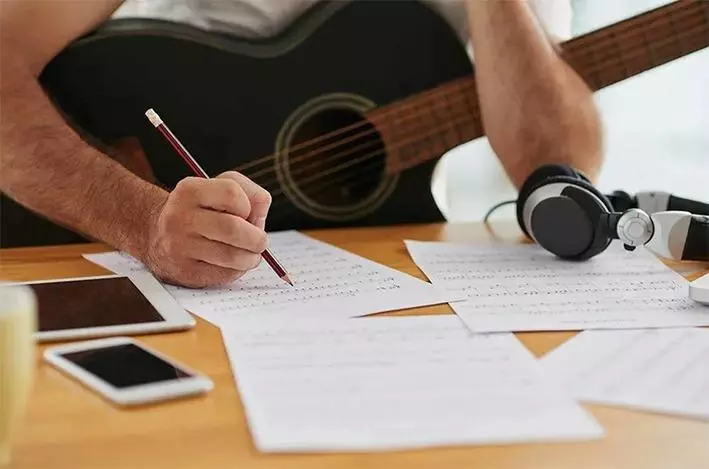
1.1. Choose Your Song’s Genre
Each music genre has its own unique characteristics that can set the mood and theme of your song. For example, country songs often feature slide guitars and lyrics about loss or overcoming struggles, while rock songs might use power chords and focus on themes of rebellion and freedom.
1.2. Select a Rhythm and Tempo That Fit Your Song
Rhythm and tempo are crucial for setting the vibe. A fast tempo works well for energetic genres like techno or punk rock, whereas slower rhythms are more fitting for emotional or melancholy styles like pop or country. A moderate tempo, often found in classic rock, can work well for songs that don’t fit into either fast or slow categories.
- For instance, punk rock often has a fast, driving rhythm in 4/4 time, with each beat lasting one second;
- Reggae uses syncopated rhythms to create a relaxed and unique sound;
- Look into the rhythms and time signatures typical of the genre you’re aiming for to find the best fit for your song.
1.3. Create a Basic Melody on Piano or Guitar
Even if these instruments don’t end up in the final track, they’re great for sketching out a melody. Try working with common keys like G, A, C, D, E, and F. Think about the theme of your song and choose a key that conveys the right mood.
1.4. Experiment with Major and Minor Scales
Using scales in your chosen key can help you find melodies that match your song’s emotional tone. Major keys are generally seen as more cheerful and bright, while minor keys bring out a more emotional or melancholic feel.
- For example, D minor is often thought of as the saddest key, while C major has a joyful sound;
- Depending on the song’s theme, you might switch between major and minor keys to add depth and a range of emotions to your composition.
1.5. Learn Basic Guitar Skills
If you want to expand your abilities, learning the basics of guitar can be a huge help in creating melodies. You don’t have to become a pro, but knowing some basic chords and how to build melodies can go a long way. You can take lessons from a local teacher or find free tutorials online to get started.
1.6. Bring in a Co-Writer If You Need Help
If you have ideas you’re struggling to bring to life, working with a friend or co-writer can be a great solution. Talk through the theme, mood, and lyrics of the song to help translate those ideas into music together. If you don’t know anyone who can help, consider finding a partner through online music forums or job boards.
1.7. Try Music Software for Song Creation
If you don’t play an instrument, music software can be an excellent alternative. These programs provide extensive libraries of drum beats, basslines, chords, and melodies that you can mix and customize. Experimenting with these tools allows you to create your own songs, playing around with different effects and filters.
- Many programs let you work with synthesizers, guitar effects, and a wide range of other tools;
- You can also purchase additional plugins to expand your sound library and add new textures to your music.
2. Adding Lyrics to Your Song

2.1. Choose a Title for Your Song
One interesting way to start developing song ideas is to brainstorm potential titles. Sometimes, phrases you overhear in movies, books, or even conversations can spark an idea for a catchy title. Jot down these phrases in a notebook or on your phone so you can revisit them later. You can also wait to name your song until after the melody and lyrics are finished. There’s no right or wrong approach here — go with what feels most natural.
2.2. Create a Chorus for Your Song
The chorus is the centerpiece that makes a song memorable and often becomes the song’s title. Play around with different phrases and melodies until you land on something that sticks. If you already have a list of possible titles, try singing them to see which ones work well as a chorus. Experiment with various melodies to find the one that best captures the vibe you’re aiming for.
2.3. Build the Chorus Around Your Hook
In some songs, the main hook phrase becomes the entire chorus, while in others, it’s just a part of the chorus, often at the beginning or end. The chorus generally sums up the main themes of the song in a broad way. It should be less detailed than the verses, leaving space for listeners to connect with the idea without overwhelming them with specifics.
2.4. Write Verses That Expand on the Themes of the Chorus
Verses complement and build on the themes introduced in the chorus, adding detail and imagery. They dig deeper into the idea, using vivid examples and specifics that make the song more emotional and meaningful.
3. Finishing Your Song
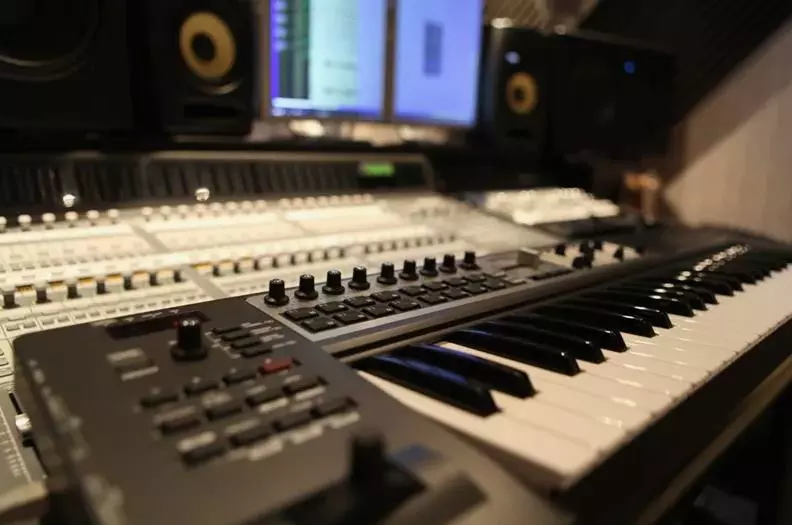
3.1. Decide if You Want to Add a Bridge
A bridge is a section that appears only once in a song and brings a new dimension to the main theme. It can add variety by introducing new lyrics, changing the key, or using different chords within the same key.
- Keep the lyrics in your bridge as general as the chorus, without adding new details;
- You can also use the bridge for an instrumental solo to showcase skill on a particular instrument.
3.2. Settle on Your Final Song Structure
The most popular song structure today is Verse/Chorus/Verse/Chorus/Bridge/Chorus. But feel free to adapt it to fit your vision. Experiment with rearranging sections, repeating parts, or moving things around until the structure feels just right.
3.3. Add Extra Instruments for a Fuller Sound
Once the lyrics and melody are complete, consider enriching the sound with instruments like drums, bass guitar, or keyboard. These additions can give the song depth and energy. Be sure all instruments are played in the same key and time signature.
- If you don’t play additional instruments, record the base track and use music software to layer in extra sounds;
- You could also find instrumental tracks on YouTube and contact the creators to discuss using their work.
3.4. Practice Your Song Until It’s Solid
Break the song down into parts and practice each one individually. Then combine them, working on transitions so that you can play through the entire song smoothly without hesitation.
3.5. Record Your Song
Once you know the song by heart, it’s time to record it. Use your phone, a digital recorder, or laptop software. Be sure to save a backup of the recording or upload it to the cloud so you don’t accidentally lose it.
- You can also film a video of yourself performing the song, holding your iPhone or Android horizontally for a better viewing experience.
Songwriting Techniques to Boost Creativity
- Develop the Skill of Noticing Original Ideas. Keep a dedicated notebook for song ideas with you at all times to jot down thoughts as they come. This way, inspiration is always within reach when it strikes;
- Find Like-Minded Collaborators. Make a list of musicians and songwriters you’d like to work with. Set up meetings to exchange ideas and work on new songs together;
- Switch Up Your Usual Writing Process. Try starting with the chorus or writing lyrics in reverse order. These small shifts can give you a fresh perspective on the creative process;
- Draw Inspiration from Other Art Forms. Visit a museum, listen to classical music, or read a short story. The emotions you experience through other art forms can inspire feelings you might channel into a song;
- Write a Song About Someone Meaningful. Focus on a close friend, family member, historical figure, celebrity, or even your pet. If possible, perform the song for that person and pay attention to their reaction;
- Write New Lyrics for a Favorite Rap Song. Take the instrumental of a track you love and write your own lyrics to it, exploring how different words can change the vibe and meaning;
- Use Free Association. Pick a few words, set a timer, and write as much as you can about each word in a few minutes. Then, see how you can weave these ideas into a song;
- Practice Writing Melodies and Chord Progressions Separately. This lets you focus on each element individually, making it easier to combine them into a cohesive sound later on;
- Learn the Basics of Copyright Protection. Understanding intellectual property laws helps you protect, publish, and license your music. Read books, take courses, or explore organizations like ASCAP, BMI, and SESAC.
The Power of Collaboration
While songwriting can be deeply personal, it doesn’t have to be a solo journey. Working with other songwriters can open up your creative horizons, providing fresh ideas and perspectives. Collaboration gives you a chance to grow as an artist, learn new techniques, and find inspiration in unexpected ways. Partnering with others, especially if you usually write alone, can lead you down paths you may never have considered.
The Benefits of Collaboration
One of the most valuable aspects of collaborative songwriting is the chance to learn from one another. Every songwriter brings a unique approach to style, song structure, and preferred chords, and when you collaborate, you get a front-row seat to someone else’s creative process. Maybe your co-writer focuses on melodies while you’re more into lyrics, or they work in a different genre. Combining these strengths can result in something bigger than either of you could create alone.
Collaboration also pushes you beyond your comfort zone. If you tend to stick to certain genres or themes, a fresh perspective can encourage you to try something new. Your co-writer might bring ideas to the table that you’d never have thought of, and this new approach can be a turning point in your creative journey.
The Vulnerability of Collaborative Creativity
Sharing your creative process with someone else isn’t always easy. Revealing raw, unfinished ideas, lyrics, or melodies takes courage. You might worry that your ideas aren’t “good enough” or that they’ll be judged. But vulnerability is an essential part of the creative process. Embracing it can actually make you a stronger songwriter in the long run.
Writing together in the same room can be nerve-wracking, but it can also lead to exciting breakthroughs. You’re sharing ideas in real-time, building on each other’s suggestions, and working through any blocks together. Sometimes, this kind of real-time interaction is exactly what a song needs to come alive.
Remote Collaboration
If working face-to-face doesn’t suit you, remote collaboration is a great alternative. You can start a song on your own and then send it to a co-writer to finish or enhance. They might revise the lyrics, add a new melody, or even restructure the composition to give it more depth. This approach lets you work at your own pace, without the pressure of coming up with ideas on the spot. Remote collaboration offers both parties the freedom to create their best work in a more relaxed setting, while still merging creative strengths.
How to Overcome Song Writer’s Block
Every songwriter encounters creative block at some point—when ideas just won’t come, no matter how hard you try. This can feel especially frustrating if you were on a roll and suddenly hit a wall. But creative block is completely normal, and the good news is that there are ways to get past it and get the ideas flowing again.
What Is Song Writer’s Block?
Writer’s block is that moment when you can’t come up with new ideas or make progress on a song, even if you’re giving it your best effort. You might sit down with your guitar or in front of your computer, but it feels like inspiration has vanished. There are many possible causes, from mental fatigue to perfectionism, stress, or even external distractions. Often, the pressure to create something “good” can stop us from creating anything at all.
The key to overcoming writer’s block is to shake things up and approach creativity from a different angle. Here are five techniques to refresh your process and bring back inspiration.
1. Free Writing
Free writing is a simple yet effective exercise for breaking through a block. Set a timer for 10–15 minutes and write whatever comes to mind without worrying about rhyme, structure, or meaning. The goal isn’t to create perfect lyrics, but to jumpstart your creative flow. You may even find some ideas in this free-writing session that can later be adapted into a song.
2. Change Your Environment
Sometimes, creative block happens because you’re stuck in the same routine. Try switching up your usual writing spot. If you always work at home, try heading to a park, coffee shop, or even another room in your house. A change of scenery can bring fresh impressions that spark new ideas. Just seeing something different can help you look at old concepts from a new perspective.
3. Use a Specific Prompt
If you’re struggling to start, a specific prompt can help get the creative process going. It could be an emotion, like “joy” or “disappointment,” or an object, like “broken mirror” or “November rain.” The more specific the prompt, the better, as it gives you something tangible to focus on rather than waiting for inspiration to strike. Narrowing your focus can make it easier to begin, and the rest of the song may start to take shape from there.
4. Collaborate with a Co-Writer
If you’ve been stuck in your own thoughts for too long, working with another songwriter can be a game-changer. Sometimes a fresh perspective is all you need to get ideas flowing. Your co-writer might bring in lyrics, a melody, or a concept that sparks a new direction for your song. Just talking through your ideas with someone else can help you see them in a new light. Plus, working with someone else adds a layer of accountability that can keep you motivated.
5. Use a Random Word Generator
Random words can be a great way to jolt your creativity. Generate a few random words online, and challenge yourself to write a line or verse incorporating them. This forces you to think outside the box and can lead to unexpected ideas or metaphors. Sometimes a single unusual word is enough to push your creativity in a new direction, helping you see your lyrics from a fresh angle.
How to Write the Song Using Artificial Intelligence

Artificial intelligence is already transforming how music is created and will likely play an even bigger role in the future. AI has become a powerful tool for inspiration and the creative process: programs can generate chord progressions, suggest lyrics, and even craft entire melodies to help songwriters get started. For those feeling stuck or just wanting to explore new ideas, AI serves as an additional “co-writer” that can quickly provide rough ideas to build on.
However, as with any technology, there’s also a downside. One of the biggest concerns is that AI could strip some of the emotional depth from the songwriting process. A song written by a person is infused with personal experience, and part of its magic comes from the emotions and stories that flow through the lyrics and melody. If artists start to rely too heavily on AI to create music, there’s a risk that songs could become overly formulaic and lose their unique human touch.
Another concern is how AI might reshape the music industry, making it harder for songwriters to stand out. When AI can produce songs quickly and efficiently, what remains for artists who pour their hearts into every line? Ultimately, like any tool, AI can enhance the songwriting process if used wisely. The key is to ensure it doesn’t replace the human element that makes music truly special.


